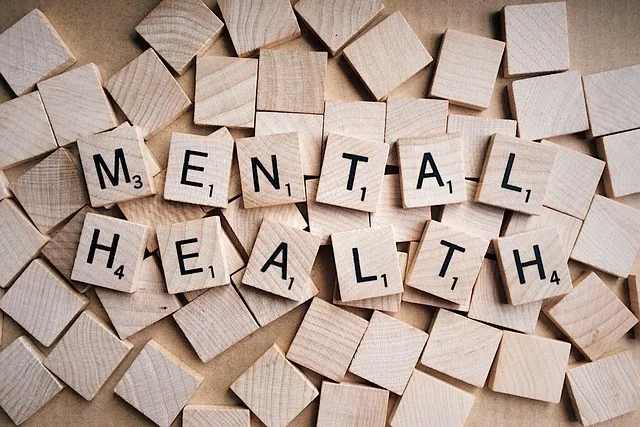Mental health professionals in Greenwood Village, leveraging Kaiser Permanente's resources, face challenges managing vulnerable clients with severe issues. To mitigate risks and enhance therapeutic environments, they implement strategies like self-awareness exercises, community outreach, and burnout prevention. Kaiser Mental Health Services in Greenwood Village employs effective strategies such as Inner Strength Development, Crisis Intervention Guidance, and regular training in cultural competency and emotional well-being promotion to ensure comprehensive and personalized care for diverse community needs, continuously improving risk assessment through evidence-based practices.
“In the sensitive field of mental healthcare, risk assessment is a vital tool for safeguarding both professionals and their clients. This article explores the unique risks faced by mental health experts and offers practical guidance on effective assessment in clinical settings. We delve into strategies employed by Greenwood Village’s Kaiser Mental Health Services to mitigate these risks, highlighting best practices. By understanding and proactively managing potential hazards, mental health professionals can enhance patient care and foster a safer work environment.”
- Understanding Mental Health Professional Risks
- Assessing Risks in Clinical Settings: A Step-by-Step Guide
- Strategies for Mitigating Risks in Greenwood Village's Kaiser Mental Health Services
- Best Practices and Continuous Improvement in Risk Assessment
Understanding Mental Health Professional Risks

Mental health professionals face unique challenges that can contribute to significant risks, especially when dealing with vulnerable individuals struggling with severe mental health issues. Greenwood Village’s Kaiser Permanente offers valuable resources and services for mental health support, including crisis intervention guidance tailored to meet individual needs. Understanding these risks is a critical first step in ensuring the well-being of both professionals and their clients.
One key aspect involves self-awareness exercises, where professionals regularly reflect on their emotional state and boundaries. This practice fosters a healthy work-life balance, enabling mental health workers to manage stress effectively. Additionally, community outreach program implementation can mitigate risks by providing additional support systems for both professionals and clients, enhancing the overall therapeutic environment.
Assessing Risks in Clinical Settings: A Step-by-Step Guide

In clinical settings, risk assessment for mental health professionals involves a systematic approach to ensure patient safety and well-being. Here’s a step-by-step guide tailored for healthcare providers in Greenwood Village areas with Kaiser offerings or similar facilities. Firstly, conduct a comprehensive patient intake evaluation, gathering detailed information about their mental health history, current symptoms, and any potential triggers. This step is crucial as it provides insights into the patient’s risk factors.
Secondly, implement evidence-based tools to assess specific risks such as suicide ideation, self-harm, or violent behaviour. Tools like the PHQ-9 for depression screening or mindfulness meditation practices can aid in early detection. Additionally, consider burnout prevention strategies for healthcare providers, as high levels of stress can impact their ability to make accurate assessments. Regular supervision and support from colleagues, coupled with personal depression prevention techniques, can help maintain optimal professional functioning.
Strategies for Mitigating Risks in Greenwood Village's Kaiser Mental Health Services

In Greenwood Village, Kaiser Mental Health Services has implemented several strategies to mitigate risks and enhance service delivery. One key approach is the focus on Inner Strength Development, encouraging clients to cultivate resilience and coping mechanisms that empower them to manage their mental health effectively. This holistic method goes beyond traditional therapy by fostering self-reliance and emotional agility.
Additionally, Kaiser provides comprehensive Crisis Intervention Guidance, ensuring that both clients and healthcare providers are equipped to handle acute situations with professionalism and empathy. Regular training in Healthcare Provider Cultural Competency is another cornerstone of their risk management strategy. By enhancing cultural awareness, Kaiser’s mental health professionals can offer more personalized care, addressing the unique needs and challenges faced by a diverse range of clients within the Greenwood Village community.
Best Practices and Continuous Improvement in Risk Assessment

In the realm of mental health care, risk assessment is a critical component for ensuring patient safety and effective treatment. Greenwood Village’s Kaiser network offers robust mental health services, leveraging best practices to continually enhance risk assessment protocols. This involves regular training on evidence-based Emotional Well-being Promotion Techniques, which equip professionals with the skills to identify subtle changes in patients’ emotional states. By integrating these techniques into their practice, Kaiser’s mental health specialists can proactively manage risks and deliver more personalized care.
Continuous improvement is a cornerstone of risk assessment at Kaiser. Professionals are encouraged to participate in Social Skills Training, focusing on enhanced communication and empathy, which are vital for building strong therapeutic alliances. Additionally, they engage in regular discussions about Emotional Regulation strategies, fostering an environment where practitioners learn from each other’s experiences and adapt their approaches accordingly. This collaborative approach not only strengthens risk management but also contributes to the overall resilience of the mental health team, ultimately benefiting patients’ long-term emotional regulation.
Mental health professionals face unique challenges that require comprehensive risk assessment strategies. As Greenwood Village’s Kaiser Mental Health Services demonstrate, implementing robust risk mitigation tactics can create a safer environment for both practitioners and patients. By following the step-by-step guide outlined in this article, other clinical settings can enhance their risk assessment practices, ensuring the well-being of their staff while delivering effective care. Continuous improvement through best practices is key to navigating the complexities of mental health work.






